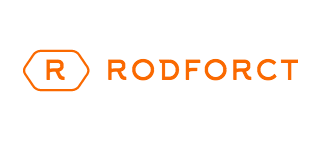12 Feb Future vision
Wool, if it were to be invented tomorrow, would be hailed as an environmental super material, says Mark Lynn, commercial and technical director, Second Nature.
In Watford, just north of London, a remarkable building has recently been completed.
The Natural House, a project undertaken by The Prince’s Foundation for the Built Environment, is a show home for the best sustainable building practices available today. But it is also a signpost for the future – to a not too distant point where homeowners and construction companies are compelled to use the most environmentally-friendly materials available.
Every element of the house has been carefully considered and constructed in order to minimise its impact on the environment and lower carbon emissions. The materials employed in the building’s structure – aerated clay block, lime-based plasters and renders – reduce the risk of VOCs and off-gassing. By eschewing plastic membranes in favour of vapour-open insulating systems, the house avoids the risk of damp and mould build-up within building fabric, key factors in the development of asthma and respiratory problems. Air quality is maintained by a passive ventilation system.
I hope that the form and function of the house is an inspiration to construction companies and consumers to adopt some of the building techniques for their own projects.
Second Nature was chosen to supply our Thermafleece wool insulation for the loft of the house. The insulation efficiency of Thermafleece is as good or better than many man-made insulation materials. It will retain its properties for at least 60 years and can suck up significant amounts of moisture without its performance being impacted.
Wool protects sheep from cold and heat in some uncompromising environments, so it is hardly surprising it does an equally good job in a loft space!
Natural fibres such as wool can be composted at the end of their life or recycled into other end-uses that require wool fibres. The absorbent qualities of natural fibres also allow buildings to breathe by regulating humidity, which can help reduce the common problems caused by condensation and in turn can help to protect the integrity of timber structures.
The fact that wool is non-toxic and allergen-free means that it can be safely handled during installation and disposal. Wool, if it were to be invented tomorrow, would be hailed as an environmental super material! So Second Nature is a proud member of the Campaign for Wool, the industry group set up to promote the use of wool as an environmentally sustainable, versatile material in fashion, interiors and buildings.
We estimate that a 250mm thickness of Thermafleece in the loft will reduce carbon dioxide emissions from a typical household by as much as 1 tonne per year and even upgrading existing insulation can reduce CO2 emissions by 250kg. And for every tonne of wool grown, nearly two tonnes of carbon dioxide is removed from the atmosphere.
But unfortunately, consumers remain largely in the dark about the benefits of wool insulation. There are several reasons for this, not least because wool insulation’s higher up-front cost deters insulation companies from promoting it to customers. However, with lower maintenance, the cost can easily balance out over the lifetime of the building.
The government body, the Energy Saving Trust (EST), has been the organisation that allocates grants, through the auspices of the energy companies, to homeowners. The EST suggests that using 270mm of insulating material can save a homeowner up to £145 a year and cut CO2 emissions by around 730kg per year. Materials generally used for insulation contain petrochemicals and include: fibreglass, mineral wool, polystyrene, polyurethane foam, and multi-foils.
The government’s proposed legislation, called “Green Deal” will undoubtedly accelerate the move to adopt energy savings measures in the home. The proposals, in their current form, will provide up to £10,000 for homeowners to slash their energy bills. The cost is deferred with repayments added to their energy bills. The important element of the proposals is that the cost of energy saving measures has to be less than the resulting savings in energy bills. For consumers, it is being designed as a zero risk decision and the measures can apply to businesses as well.
Energy and utility companies are now assessing various energy saving materials and technologies to ascertain their relative benefits. Hopefully, this will provide a huge opportunity for wool insulation companies to come to the party. Currently, wool insulation only makes up a small fraction of the overall market. The Green Deal, should it remain intact in its current form until it passes into legislation, could give the wool insulation industry a much welcome boost.
However, I do not have a sense that the companies currently assessing various insulation technologies are looking beyond the energy saving capacity of each material. What about the carbon cost of creating these materials? What about the moisture retention properties? What about performance over a 50 or 60 year time period? And what about an assessment of whether different materials are better suited to different types of properties?
The Green Deal, given the scale of its ambition, should not be about trying to find a simple, one size fits all solution for insulation. We don’t simply need a replacement for the CERT scheme – we need something that is far greater reaching in terms of its technical approach and which provides consumers with the widest and most informed choices.

Sorry, the comment form is closed at this time.